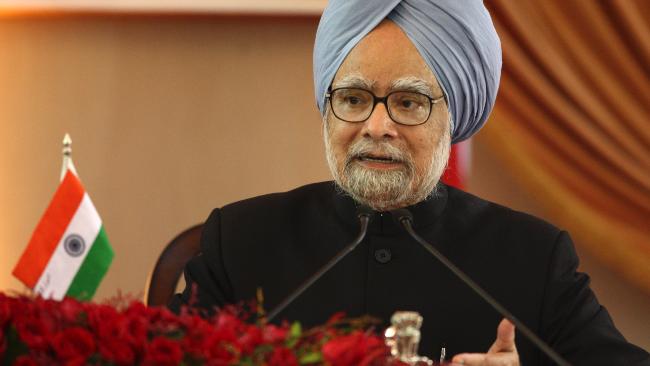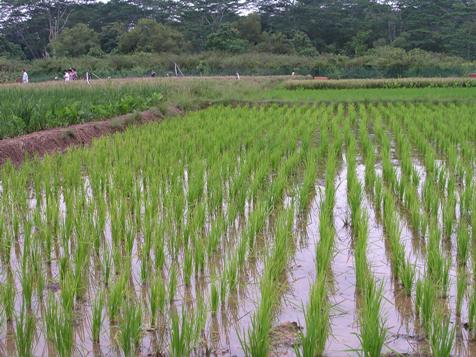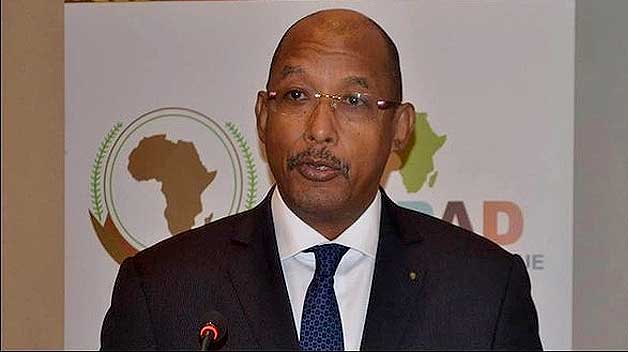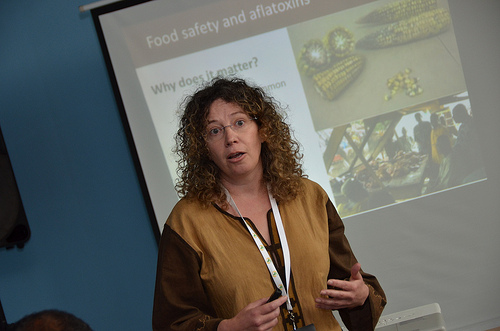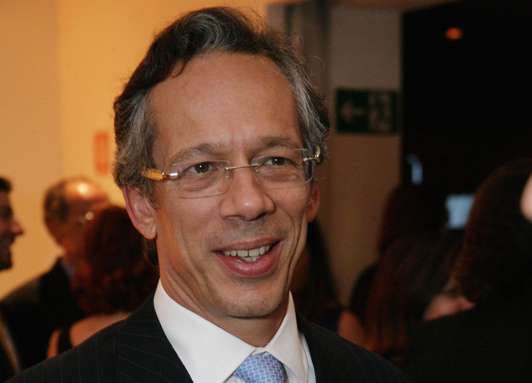H
Giving a voice to the ‘missing’ women in India’s climate plans
Women have the power to put India on the course to a green sustainable future, specifically, poor rural women working in the agriculture sector.
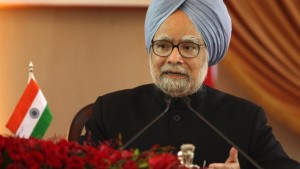
India’s economy is predominately agrarian and increasingly female dominated. 80% of all economically-active women are employed by the agricultural sector.
As men are migrating to urban areas for employment opportunities, partly as farming is now a more risky business, the women are staying back and keeping the homes and farms afloat.
Aditi Kapoor from Alternative Futures has labelled this the ‘feminisation’ of the agriculture sector, with a 7.6% increase in the proportion of workers in the sector in India being women over the last two decades.
According to the Government’s own assessment, the agriculture sector is facing serious risks due to the current impacts of climate change: increasing temperatures, erratic rainfall patterns and a higher number and severity of floods, droughts and cyclones.
A number of studies project that unless India adapts to the impacts of climate change, there is a probability of 10-40% loss in crop production in India by 2080- 2100 due to global warming. Economic growth, food security and fighting poverty stand to lose.
Women are at the front line of these impacts. Not only due to their involvement in the agriculture sector, but also because they face the burden of the household tasks such as fetching water, fuel wood and fodder.
As these resources become scarcer, they struggle more to provide for their families.At the same time they often face more restricted access to key assets such as land, money or political voice, than men. Different gender roles and status thus shape people’s opportunities and capacities to adapt to the impacts of climate change.
As agricultural work has become increasingly ‘women’s work,’ land ownership has been increasingly masculinised. In terms of both the number of landholdings, and the size of the land, there is a growing gender gap. This has serious implications for women’s access to credit to invest in adaptation technologies or set up new sources of livelihood. In some cases it also limits their ability to participate in local decision-making bodies and support systems.
As climate change makes its impact felt in India, the central and State Governments are formulating their plans and policies for adapting to these new environment. However, for these to be successful, the specific opportunities and challenges that women face in adapting to the impacts of climate change need to be understood and addressed.
For example, organic farming is being promoted by many State Governments in India for both environmental and food security reasons. However, what is often ignored is that it requires more manual labour, and this extra burden falls predominately on women. At the same time, women have less access to the support and inputs being offered by the Government to transition to organic farming, mainly due to the lack of land rights. Without specific efforts to promote labour-reduction measures for organic farming, and work through women’s groups to promote them, the policy could fail and/or have negative consequences for women empowerment.
Aditi Kapoor has shown that India’s climate plans and investments are not in general ‘gender aware’. For example, her in-depth study of four State Action Plans on Climate Change reveals that there is little or low priority given to women agriculture. Even when efforts have been made, for example by setting a target of 33% female participation in training programmes, they reveal ignorance about the reality of women’s role in the sector.
CDKN has commissioned a short documentary that gives a voice to these ‘missing’ women in India’s climate plans. Rather than portraying women as victims of climate change, it shows how women should be considered and supported as positive and crucial agents for delivering climate compatible development.
The film’s director, Krishnendu Bose, gained the trust of a group of local women in the hill state of Uttarakhand, and trained them in basic filmmaking techniques. The Nayi women then told their story about how women can be leaders in the fight against climate change.
The women have benefited from a State Government initiative to set up ‘Van Panchayats’ (forest community governments) which bring together forest department officers and villages to jointly manage village forests. A third of the members of the executive committee and half of the general body members are mandated to be women.
“In 2005, after the policy came in, we together with the panchayat (village government) and sarpanch (village leaders) made our own rules and regulations….cutting grass would be 500 INR fine (GBP 5)…chopping green leaves, 100 INR fine (GBP 1) … and the defaulting person deposits her sickle, and we auction it”
“This way, we women protected our forest”
The women have also formed a cooperative, taking knowledge from local NGOs and gather dry leaves to use for organic farming. The products are then shared within the community, contributing to food security. At the same time, they are bringing to life traditional farming practices as they have seen how commercial farming has been affected by climate change.
These strong, pro-active women are taking charge of their community.
“The 2005 rule said that a woman could become the sarpanch (village leader). The men protested against this. But, a women sarpanch was elected. This is good for the forest. And we women benefit from it. Now even men have started supporting us.”
Their message to the government is that this is just the first step. For true empowerment, other power hierarchies must be tackled, such as providing women with land ownership. Enhancing such capacities will help women, as well as the rest of their communities, cope and better adapt to climate change and fight environmental degradation.
By Elizabeth Gogoi (CDKN) (Published courtesy: Lead International)
G8 rice plantation project meets Nigeria resistance
Farmers in Nigeria’s north eastern state of Taraba are being forced off lands they have farmed for generations to make way for US company Dominion Farms to establish a 30,000 ha rice plantation.
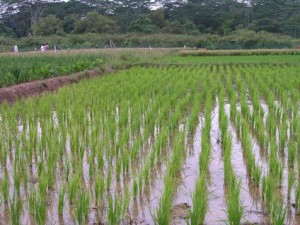
The Dominion Farms project forms part of the G8’s New Alliance for Food Security and Nutrition in Africa and the Nigerian government’s Agricultural Transformation Agenda, which are both intended to enhance food security and livelihoods for small farmers in Nigeria. A new report, however, finds that the Dominion Farms project is having the opposite effect.
The report was produced by two Nigerian NGOs, Environmental Rights Action (ERA)/Friends of the Earth Nigeria (FoEN) and Centre for Environmental Education and Development (CEED), with the support of Global Justice Now and GRAIN. It is based on field investigations and interviews conducted with local farmers, community leaders and government officials.
The report shows how the lands provided to Dominion Farms are part of a public irrigation scheme that thousands of families depend on for their food needs and livelihoods. The local people were not consulted about the Dominion Farms project and, although the company has already started to occupy the lands, they are still completely in the dark about any plans for compensation or resettlement. Dominion Farms is involved in a similar land grab for a rice farm in Kenya that has generated conflicts with local communities.
“The only story we hear is that our land is taken away and will be given out. We were not involved at any level,” says Rebecca Sule, one of the affected woman farmers from the Gassol Community in Taraba State. “For the sake of the future and our children, we are requesting governmental authorities to ask Dominion Farms to stay away from our land.”
“Our land is very rich and good. We produce a lot of different crops here, and we farm fish and rear goats, sheep and cattle,” says Mallam Danladi K Jallo, another local farmer from Gassol. “But since the Dominion Farms people arrived with their machine and some of their working equipment, we were asked to stop our farm work and even leave our lands as the land is completely given to the Dominion Farms project.”
“The local people are united in their opposition to the Dominion Farms project,” says Raymond Enoch, one of the authors of the report and director of CEED. “They want their lands back so that they can continue to produce food for their families and the people of Nigeria.”
Nigeria is already suffering from violent conflicts and insecurity, especially in the North. Land grabs for agribusiness projects will only make the situation worse.
Global campaigns make 2015 a significant year for sustainability
On Thursday 16 January 2015, we saw the launch of action/2015 – a historic campaign and global movement calling for the eradication of extreme poverty and inequalities worldwide within a generation – held all over the world.
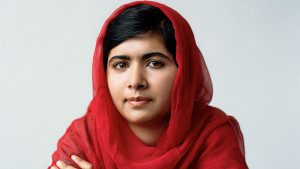
Around the world people took to the streets in rallies and marches to demand action – including Liberia, Mauritius, Nigeria, Indonesia, Uganda, Belgium, El Salvador, Costa Rica and many more.
According to a new research, almost a billion extra people face a life of extreme poverty if leaders duck key decisions on poverty, inequality and climate change due to be taken at two crucial summits in New York and Paris later this year, with billions more continuing to face a life of hardship.
That’s the warning by more than a thousand organisations around the world that launched the new campaign, calling on local and world leaders to take urgent action to halt man-made climate change, eradicate poverty and address inequality.
A new 2015 agreement on climate change, that will harness action by all nations, took a further important step forward in Lima, Peru last December after two weeks of negotiations by over 190 countries.
Nations concluded by elaborating the elements of the new agreement, to be agreed upon in Paris this year, while also agreeing the ground rules on how all countries can submit contributions to the new agreement during the first quarter of 2015.
But the new calculation released by the action/2015coalition shows that, even using relatively conservative scenarios, the number of people living in extreme poverty – on less than $1.25 a day – could be reduced dramatically from over a billion to 360 million by 2030. Based on work by the University of Denver, in the year 2030, about 4% of the global population would live in extreme poverty, (compared to 17% today) if critical policy choices on inequality, poverty investment and climate change are made this year and implemented thereafter. Estimates of other researchers, looking at a longer list of variables, show that the eradication of extreme poverty is achievable for the first time in history – a key objective of the campaign.
However, if leaders fail to deliver and build on the growing momentum for ambitious deals at the UN Special Summit on Sustainable Development in September and the UN Climate talks in Paris in December, and scale back their efforts, the number of people living in extreme poverty could actually increase to 1.2 billion by 2030. This increase would be the first in a generation (since 1993) and almost a billion higher (886 million) than if resolute action is taken. Under this scenario 1 in 3 of the world’s population would live under $2 a day.
Malala Yousafzai, Nobel Prize winner, who put her life on the line for the right to education, said: “2015 must be the year the world wakes up and delivers a safer, more just future for children and young people. We all must play our part in ensuring this is the case. Do not let this opportunity go to waste.”
Alongside Malala, dozens of high profile activists from Queen Rania of Jordan and Bono to Ben Affleck, Bill and Melinda Gates and Mo Ibrahim have backed the coalition of over a thousand organisations in more than 120 countries around the world.
In Nigeria, popular musician D’Banj, leading actress Genevive Nnaji, and the first Nigerian Idol winner Timi Dakolo, also joined their voices to the campaign, which is calling on world leaders to agree plans to eradicate poverty; prevent dangerous climate change and tackle inequality at these summits.
Action/2015 announced by Malala when she accepted the Nobel Peace Prize – is one of the biggest campaigns ever to launch – combining environmental, human rights, development organisations and faith networks. From household names like Amnesty International, Save the Children and WaterAid to grassroots NGOs working with local communities, the movement aims to make sure the agreements of 2015 are shaped by the people.
Speaking for action/2015, Amitabh Behar, Indian anti-poverty activist, said: “If we get this wrong, we could see the number of people living in poverty increase for the first time in our generation. But if we get it right – tackle poverty, inequality and climate change – we could eradicate extreme poverty within a generation. With two summits of this importance within just months of each other, 2015 could be one of the most important years for our planet since the end of the Second World War, but only if we rise to the occasion.”
At the launch, activities took place in more than 50 countries all around the world from Lebanon and Liberia to Nigeria and Norway to South Africa and Sri Lanka. Many of these were spearheaded by 15 year olds – a constituency who will be among the most affected by the agreements.
While the Secretary-General of the United Nations Ban Ki-moon met a group of 15-year-olds in New York to discuss the need for global action in 2015, a group of 15-year-olds presented their hopes for the future to Finance Minister, Ngozi Okonjo-Iweala, at a live concert featuring popular musician, D’Banj.
Speaking about why she got involved in the campaign, Maryam, a Nigerian child rights activist, who will turn 15 this year, said: “By 2030 I will be an adult, and may have children of my own. My generation might not be the ones making decisions today, but we will be the ones to make sure that our leaders take full responsibility for the actions they take this year. I and thousands like me are demanding they make the right choices, because our future is at stake. We ask that they make choices which are dictated by the needs of future generations and not choices that are dictated by short-term politics.”
Action/2015 is calling on the public to join them in their calls to ensure world leaders commit to a better world. Throughout 2015, the campaign will provide ways for everyone everywhere to get involved in influencing the outcomes of these global debates that could achieve: an end to poverty in all its forms; the meeting of fundamental rights, tackling inequality and discrimination; an accelerated transition to 100% renewable energy; and, a world where everyone can participate and hold their leaders accountable.
Published courtesy: Lead International
AU, NEPAD launch roadmap for agriculture growth
The African Union Commission (AUC) and NEPAD Agency have launched the AU Implementation Strategy and Roadmap to achieve the 2014 Malabo Declaration, for agricultural growth and shared prosperity. The Strategy was launched Tuesday night at a high-level dinner on the fringes of the 24th AU Summit in Addis Ababa, Ethiopia.
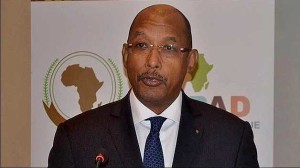
In his statement to 300 senior officials, NEPAD Agency Chief Executive Officer Dr Ibrahim Mayaki said that the Strategy is a celebration of leadership, partnership and regional integration since the commitment made by African leaders in 2003 to give Agriculture-led development a priority and which resulted in the adoption of the Comprehensive Africa Agriculture Development Programme (CAADP). Dr Mayaki said that African leaders have realised that “most of Africa’s national problems do not have optimum national solutions, but regional solutions”.
AUC Commissioner for Rural Economy and Agriculture, Mrs Tumusiime Rhoda Peace, emphasised that the Strategy would transform agriculture for more inclusive growth, by focusing on increased agricultural production, intra-African trade, resilience of livelihoods, and strengthening the governance of land, water and other natural resources.
Rhoda Peace urged that the 2014 Malabo Declaration expresses a firm commitment toward attaining an agriculture revolution in Africa. African leaders and all stakeholders involved must be accountable to actions and results, she said.
The event brought together Members of the AU Executive Council (Ministers of Foreign Affairs), the Permanent Representative Committee (Ambassadors), AU Senior Officials, Regional Economic Communities (RECs); Chief Executives from the private sector, farmer organisations; CSOs, Youth and Women organisations, and Development Partners.
The roadmap will guide African member states and development partners to accelerate agricultural growth so as to achieve the 2025 vision for shared prosperity and improved livelihoods. Key to the process is the CAADP Results Framework to track progress and ensure accountability of governments starting 2017.
The high-level event brought together Members of the AU Executive Council (Ministers of Foreign Affairs), the Permanent Representative Committee (Ambassadors), AU Senior Officials, Regional Economic Communities (RECs); Chief Executives from the private sector, farmer organisations; CSOs, Youth and Women organisations, and Development Partners.
It also marked the formal closure of the 2014 AU Year of Agriculture and Food Security, and officially commenced actions taken towards the Malabo Declaration which was adopted by African Heads of State and Government at the 23rd AU Assembly in Malabo, Equatorial Guinea, in June 2014.
The Strategy was formally launched by the Chairperson of the AU Executive Council, Ms Fatma Vall Mint Soueinae.
The 2014 Malabo Declaration emphasises on seven key commitments. These are:
- Recommitment to the Principles and Values of the CAADP Process
- Commitment to Enhancing Investment Finance in Agriculture
- Commitment to Ending Hunger in Africa by the year 2025
- Commitment to agriculture contributing to poverty reduction at least by half by the year 2025, through Inclusive Agricultural Growth and Transformation
- Commitment to tripling Intra-African Trade in Agricultural commodities and services, by the year 2025
- Commitment to Enhancing Resilience of Livelihoods and Production Systems to Climate Variability and other related risks
- Commitment to Mutual Accountability to Actions and Results
Report: Africa must embrace ‘wet markets’ as key to food security
Studies find informal markets provide essential sources of food and income for millions of poor, with milk and meat that is often safer than supermarkets
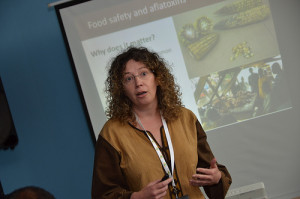
Misguided efforts to control the alarming burden of food-related illnesses in low-income countries risk intensifying malnutrition and poverty – while doing little to improve food safety. Blunt crack-downs on informal milk and meat sellers that are a critical source of food and income for millions of people are not the solution.
That’s a key finding of a new book released on Tuesday by the International Livestock Research Institute (ILRI) and partners – Food safety and informal markets: Animal products in sub-Saharan Africa – that probes the complicated world of traditional or ‘informal’ markets in livestock products. These are often called ‘wet’ markets because they use so much water in cleaning due to the perishable and often contaminated nature of the foods they sell. These venues sell most of the livestock and fish products consumed in Africa. And they are growing rapidly as rising populations and incomes drive greater demand for meat and milk.
While the food sold in informal markets is often safe, in Africa and elsewhere in the developing world, they are suspected of spreading dangerous pathogens ranging from Salmonella and E. coli to SARS, avian influenza and tuberculosis. But ILRI researchers warn that the push for greater food safety standards in these markets must be informed by an understanding of their vital role as a provider of food and income to several hundred million people who rank among the world’s poorest.
‘Our work across eight countries found that we are right to be concerned about food safety in informal markets – from milk in Mali, to fish in Ghana, to chicken in Mozambique, to beef in Kenya – particularly for spreading gastrointestinal diseases that are a leading cause of sickness and death in developing countries,’ said Delia Grace, programme leader for food safety and zoonoses at ILRI. ‘But it also shows that we are wrong to think that we can just adopt solutions developed in wealthy countries that favour large commercial operations over small producers. That will just exacerbate hunger and further limit money earning options for the poor.’
Research by ILRI and partners shows that in most developing countries, more than 80 per cent of livestock product purchases occur through informal markets – and in places where there is no ‘formal’ alternative, like a western-style supermarket, close at hand. And the studies find that this situation is unlikely to change for decades to come. Also, even where supermarkets are an option, studies in East and Southern Africa have found that, due to a poorly patrolled chain of custody between producer and seller, milk and meat sold in supermarkets may pose a greater health threat than what is sold in traditional markets.
Moreover, small producers have many attractions for poor consumers. They are typically within walking distance for people who lack cars and they offer the opportunity to purchase fresh food in small amounts—part of what is known in East Africa as the ‘kadogo’ economy. (Kadogo is street slang for ‘small.’) In addition, many sellers in traditional markets will extend credit and typically offer the traditional foods their customers prefer.
The researchers note that the poor consumers in developing countries who suffer the most from food-borne illness are often the same people who survive by selling meat and milk at the local wet market or street stall, or who depend on informal markets to supply affordable, nutritious food for their families.
‘We need to understand how much disease is caused by unsafe milk and meat in low-income countries and also how much they contribute in terms of nutrition and income’, said Kristina Roesel, co-coordinator of the Safe Food, Fair Food Project at ILRI. ‘We need to understand the complete picture so we can work to improve food safety without harming food and economic security.’
For example, in sub-Saharan Africa, one out of ten, and possibly more, cases of gastrointestinal or diarrheal diseases are caused by food-borne threats – and these afflictions rank among the top three killers in the region and are a leading cause of death for children under the age of five. Milk, meat, fish and fresh vegetables are common carriers of disease-causing pathogens. But at the same time, these foods are essential for maintaining health and proper childhood development. Moreover, around the world, around one billion smallholder farmers rely on livestock for their livelihoods, with sales of milk and meat through informal markets providing much needed income.
The main lesson from research on food safety issues in Africa, the authors say, is that in the developing world, ‘policymakers need to look to the facts, not just the fears, before moving to curtail meat sales at the local wet market or purchases of unpasteurised milk from traditional street vendors’.
‘Hazards Are Not Always Risks’
A key finding that emerges from the book is that in low-income countries, it’s important to separate potential hazards – bacteria, viruses, parasites, chemicals and toxins – from the real-world risks they are likely to present to consumers.
Data from sites across East Africa, for example, have found that the raw, unpasteurised milk commonly available from street vendors and traditional markets may contain many health hazards. Yet the actual risks to consumers may be negligible – due to the common practice in this region of boiling milk before consuming it.
In other situations, hazards are strongly associated with serious health risks. For example, the book includes a study of Fulani herding communities in Mali adamantly opposed to boiling milk because they believe boiling destroys milk’s life-giving properties. In Mali, researchers found efforts to encourage milk boiling can actually disrupt the social order of herding communities. Similarly, in Ethiopia, young men often view the consumption of meat – particularly meat from the loins, diaphragm, hump or thighs of a ruminant animal – as something that imparts strength and courage and thus, by definition, is ‘safe’ for consumption, even when eaten raw and with obvious health risks. ‘A man without a tapeworm is not a man’, said one of the study respondents.
‘Food safety policy should be guided by rigorous research to understand the ways food is produced and consumed in different societies so we can devise strategies that are most likely to reduce the risks, particularly to poor consumers,’ said Roesel.
Successful efforts to reduce food safety risks in informal dairy markets in Kenya offer evidence that analysing the flow of food products from producer to consumer can identify opportunities for effective interventions. In this instance, training informal milk vendors and offering them incentives to improve milk handling practices that can transmit diseases such as brucellosis, tuberculosis and diarrhoea generated lasting benefits worth $28 million per year.
Similarly, analysing how food moves from farm to fork along Nigerian beef chains led to effective and efficient interventions by identifying where contamination was most likely to occur. In Nigeria, butchers were found to be the hotspot for contamination. But providing training and simple technologies led to an 18 per cent decrease in unsafe meat. This in turn generated savings of $780 for each butcher trained by reducing costs of illness associated with eating contaminated meat, while the cost of training was just $9.
The study also found that most consumers using informal markets themselves care a lot about food safety. This is evidenced in their purchasing behaviour. For example, up to 40 per cent of consumers in Vietnam switch to alternative meats in the wake of animal disease epidemics. Researchers have found that poor consumers are willing to pay a 5 to 15 per cent premium for safety-assured products, and that demand for food safety increases with economic development, rising income, urbanisation, increased media coverage and education level.
Informal Markets: The Past and Future of Food Sales
Many policymakers mistakenly believe that food-borne illness in developing regions will rapidly decline as the modernisation or ‘supermarketisation’ of food sales steadily supplants informal markets. But the ILRI studies show that Africa’s supermarket food is not necessarily safer than food in informal markets and also that informal markets are unlikely to disappear – and could even become stronger – in the coming decades.
Indeed, the research shows that consumers prefer informal to formal markets, and not just for their lower prices, but also because traditional markets tend to sell fresher food. They also sell local products and breeds, which many consumers continue to prefer – and those preferences seem to intensify as incomes rise. For example, in Africa and Southeast Asia, consumers often prefer local chicken breeds over cheaper imported breeds.
‘Informal markets are growing, not shrinking, across the developing world and in many ways mirror the “locavore” trend occurring in wealthy countries,’ said Grace. ‘If we are going to improve food safety in these markets, we need policies that are guided by an understanding of producer and consumer behaviour, local diets and customs, and interventions that can reduce illness without imperilling food security or increasing poverty.’
The ILRI works with partners worldwide to improve food and nutritional security and to reduce poverty in developing countries through research on efficient, safe and sustainable use of livestock – ensuring better lives through livestock. The products generated by ILRI and its partners help people in developing countries enhance their livestock-dependent livelihoods, health and environments.
Global plastic production rises, recycling lags
New Worldwatch Institute analysis explores trends in global plastic production and recycling

For more than 50 years, global production of plastic has continued to rise. Some 299 million tons of plastics were produced in 2013, representing a four percent increase over 2012. Recovery and recycling, however, remain insufficient, and millions of tons of plastics end up in landfills and oceans each year, writes Gaelle Gourmelon, Communications and Marketing Manager at the Worldwatch Institute.
Worldwide plastic production has been growing as the durable, primarily petroleum-based material gradually replaces materials like glass and metal. Today, an average person living in Western Europe or North America consumes 100 kilograms of plastic each year, mostly in the form of packaging. Asia uses just 20 kilograms per person, but this figure is expected to grow rapidly as the region’s economies expand.
According to the United Nations Environmental Programme (UNEP), an estimated 22-43 percent of the plastic used worldwide is disposed of in landfills, where its resources are wasted, the material takes up valuable space, and it blights communities. Recovering plastic from the waste stream for recycling or for combustion for energy generation has the potential to minimise these problems. However, much of the plastic collected for recycling in Europe, the United States, Japan, and other industrialised countries is shipped to countries with lower recycling standards. And burning plastic for energy requires air emissions controls and produces hazardous ash, all while being relatively inefficient.
Most plastic scraps from countries that have established collection systems for the material flow to China, which receives 56 percent (by weight) of waste plastic imports worldwide. Indirect evidence suggests that most of this imported plastic is reprocessed at low-tech, family-run facilities with no environmental protection controls, such as proper disposal of contaminants or waste water. There are also concerns that low-quality plastics are not reused but are disposed of or incinerated for energy in plants that lack air pollution control systems. Through its 2010 Green Fence Operation, the Chinese government has started to work to reduce the number of unregulated facilities.
Approximately 10-20 million tons of plastic end up in the oceans each year. A recent study conservatively estimated that 5.25 trillion plastic particles weighing a total of 268,940 tons are currently floating in the world’s oceans. This debris results in an estimated $13 billion a year in losses from damage to marine ecosystems, including financial losses to fisheries and tourism as well as time spent cleaning beaches. Animals such as seabirds, whales, and dolphins can become entangled in plastic matter, and floating plastic items-such as discarded nets, docks, and boats-can transport microbes, algae, invertebrates, and fish into non-native regions, affecting local ecosystems.
The environmental and social benefits of plastics must be weighed against the problems that the durability and high volume of this material present to the waste stream. Plastics help to reduce food waste by keeping products fresh longer, allow for the manufacture of life-saving healthcare equipment, reduce packaging mass compared with other materials, improve transportation efficiency, and have large potential for use in renewable energy technologies. But plastic litter, gyres of plastics in the oceans, and toxic additives in plastic products – including colorants, flame retardants, and plasticizers (such as bisphenol A, or BPA) – are raising awareness of and strengthening consumer demand for more sustainable materials.
Along with reducing unnecessary plastic consumption, finding more environmentally friendly packaging alternatives, and improving product and packaging design to use less plastic, many challenges associated with plastics could be addressed by improving management of the material across its life cycle.
Businesses and consumers could increase their participation in collection in order to move plastic waste toward a recovery supply chain, and companies could switch to greater use of recycled plastics. Governments must regulate the plastic supply chain to encourage and monitor recycling.
Report highlights:
- About four percent of the petroleum consumed worldwide each year is used to make plastic, and another 4 percent is used to power plastic manufacturing processes.
- In Europe, 26 percent, or 6.6 million tons, of the post-consumer plastic produced in 2012 was recycled, while 36 percent was incinerated for energy generation. The remaining 38 percent of post-consumer plastics in Europe went to landfills.
- In the United States, only nine percent of post-consumer plastic (2.8 million tons) was recycled in 2012. The remaining 32 million tons was discarded.
World Bank supports Brazil climate-friendly projects with $400 million
The International Finance Corporation (IFC), a member of the World Bank Group, is providing a $400 million financing package for Banco Itaú Unibanco, one of the largest banks in Brazil, to support projects that will help mitigate the effects of climate change. With IFC’s support, Itaú will finance renewable energy, water treatment, and energy efficiency projects, along with other initiatives that help to reduce greenhouse gases.

The financing includes a five-year $100 million loan for IFC’s own account and a three-year $300 million syndicated loan. The syndicated lenders are Bank of America, Commerzbank, and Mizuho Bank, each with a $100 million participation.
Access to reliable and affordable energy from diversified sources, including renewable energy, is critical to securing Brazil’s long-term competitiveness and sustainable economic growth, and thus a key development priority for IFC. Brazil has a large untapped renewable energy potential comprising wind, small hydro and biomass resources. Installed capacity of renewable energy is expected to increase by 10 percent through 2021 to meet the rising demand for power and reach Brazil’s goal of increasing the share of renewable sources in the country’s energy mix.
“This financing is aligned with Itaú Unibanco’s goal to promote improved quality in the country’s energy matrix,” said Candido Bracher, Itaú BBA CEO.
“IFC is pleased to partner once again with Itaú to finance projects that help promote Brazil’s sustainable development” said Hector Gomez Ang, IFC Brazil Country Manager. “Private sector plays a critical role in expanding access to climate change mitigation solutions. Itaú, with its ability to multiply the reach of IFC’s investments, is an important partner to foster sustainability in Brazil.”
Since 2005, IFC has invested $1.7 billion in climate-related projects in Brazil. IFC’s global renewable energy strategy focuses on investing in technology and new business models to reduce the cost of renewables, helping to mak them more widely and increasing access to energy in emerging markets. Globally, since 2005, IFC has provided about $11 billion in long-term financing for renewable power, energy efficiency, sustainable agriculture, green buildings and private sector adaptation to climate change. IFC has co-financed more than 2,600 megawatts of wind power and more than 800 megawatts of solar power in emerging markets. In FY14, IFC’s global climate investments were $2.5 billion, including 117 projects in 35 countries.
Itaú Unibanco is the largest privately owned bank in Latin America. Its vision is “to be the leading bank in sustainable performance and customer satisfaction”. To accomplish this, it has established a set of 10 corporate culture attitudes to guide its teams. Itaú Unibanco’s main operations are: commercial banking (insurance, pension plan and capitalisation products, credit cards, asset management, credit products and services for individuals and small companies); wholesale banking (Itaú BBA – corporate and investment banking – and middle-market companies); and consumer credit (financial products and services to non-account holders).
Its operations are mainly in Brazil, but its international presence enables it to provide high-quality service to local clients and Brazilians abroad. It is present in 19 countries outside of Brazil. Itaú Unibanco is listed on the BM&FBovespa, Buenos Aires and New York stock exchanges (ITUB).
The IFC is a global development institution focused exclusively on the private sector. Working with private enterprises in about 100 countries, it utilises its capital, expertise and influence to help eliminate extreme poverty and boost shared prosperity. In FY14, it provided over $22 billion in financing to improve lives in developing countries and tackle the most urgent challenges of development.
Environmental issues we want on parties’ manifesto, by activists
The Environmental Rights Action/Friends of the Earth Nigeria (ERA/FoEN), OILWATCH and the Host Communities Network (HOCON) have asked Nigerians to reject political parties and aspirants to political offices who do not have the environment and strategies of reversing livelihoods loss on their agenda.

In a release issued on Monday in Lagos, the groups said Nigerians must take their destinies in their hands by voting wisely in the upcoming elections or remain in perpetual servitude.
ERA/FoEN Executive Director, Godwin Ojo, said on behalf of the groups: “We believe that the elections present another great prospect for Nigerians to decide the course that the ship of state must take in the next four years It is an opportunity to demand good governance and accountability, to check corporate misrule, corruption, total disregard for local livelihoods, and reckless degradation of the environment, violence, and theft which continue to plague our land”.
The groups noted they are particularly concerned about pockets of violence across the country as the presidential and gubernatorial elections slated for February 2015 draw near, even as they urged the government to ensure Nigerians in every part of the country are not molested or intimidated in the course of carrying out their civil duties as enshrined in the Constitution.
On the manifesto of existing political parties, they stressed that the environmental justice group is utterly disappointed that, for all the hype, they are neither discussing the environment nor proffering solutions to the myriad of environmental challenges besetting the nation.
The groups said they stand in solidarity with well-meaning Nigerians who have resolved not to allow the status quo remain.
“We have resolved not to sit back and complain but will go out to cast our votes only for credible individuals with proven commitment to the environmental cause among a host of packages to get the nation out of the doldrums,” submitted Ojo.
Some of the issues Ojo said the three groups will want on the table in the parties’ manifesto include supporting the cause for the environment and strategies to cushion the effects of deforestation and desertification destroying rural livelihoods in the south and north respectively, implementation of the United Nations Environment Programme (UNEP) report recommendations on Ogoniland, and support to clean up of the Niger Delta.
Others are bringing Shell to account for its human rights violations in the Niger Delta, support National Basic Income Scheme for all Nigerians who are unemployed, and diversification of the economy from oil dependency, support the passing of Petroleum Industry Bill and the declaration of Zamfara lead poising a national disaster and support rural livelihoods and artisanal mining, among others.
They also advocate that oil companies set up $100 billion Clean Up and Restoration Fund for the Niger Delta.
Unveiling Africa’s tallest towers
Algiers edifice set to topple Johannesburg tower as global property portal, Lamudi, investigates sky-high buildings on the continent

Towering 270m over the Algerian capital, the new Great Mosque of Algiers will be the tallest building in Africa once it is completed. Construction slated for completion this year.
The new Great Mosque will surpass Africa’s current tallest building, the 223m Carlton Centre in Johannesburg, South Africa. The shopping and office centre has been Africa’s tallest skyscraper for more than 40 years. South Africa dominates the list of the country’s supertall buildings, with seven out of the top 10 tallest towers located in the country.
At 173m, Ponte City Apartments, also in Johannesburg, claims the second spot. Constructed in 1975, the building has also been on the list for nearly four decades. The residential building was reportedly originally planned to be 64 storeys high, but was scaled back due to fire safety concerns.

In third place on the list is NECOM House in Lagos, Nigeria. In addition to its height, the building has another distinguishing feature: the communications spire at the top acts as a lighthouse beacon for Lagos Harbor.
Africa has been slower to embrace supertall buildings than other regions, particularly Asia which is home to the majority of the world’s top skyscrapers. While the top 10 sky-high buildings in Africa would measure a total of 1.6km if stacked one on top of the other, Asia’s tallest buildings would reach more than 5km into the sky.
But while South Africa has traditionally been the home of skyscrapers in Africa, there are signs this is changing, as other countries embrace high-rise life. Two towers in Tanzania now feature on the continent’s top 10 tallest towers list: the PSPF Towers A and B, unveiled last year in the capital Dar Es Salaam.
Elsewhere, the Hazina Trade Center is now under construction in Kenya’s capital, Nairobi. The building is tipped to become the tallest building in East Africa and the third tallest on the continent once completed 2016. In Ethiopia, the 99-storey Chuanhui International Tower will measure 448m. The supertall tower in Addis Ababa will house a five-star hotel, premium office space, restaurants and more.
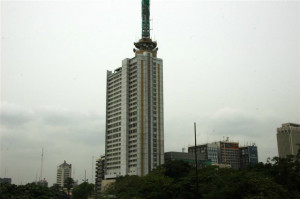

The world’s tallest structure is the Burj Khalifa, a skyscraper located in Dubai, the United Arab Emirates (UAE). It stands at 829.8m.

